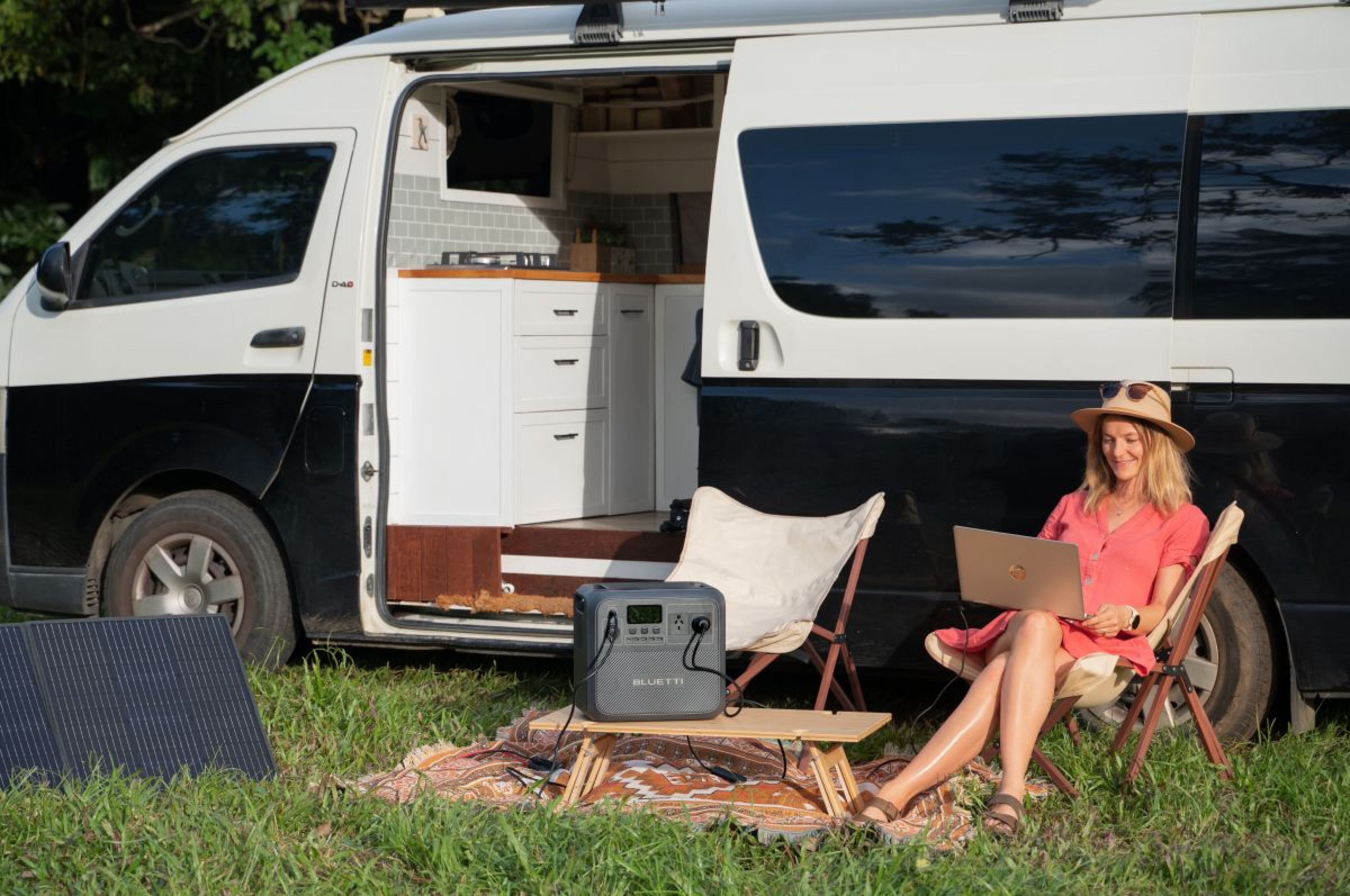
With a growing appetite for technology, the need for portable power when away from the bright lights of major cities has never been stronger.
Sure, some of us prefer to escape the rat race to sit beneath the stars in peace and quiet. However, portable power can be of benefit to these people, too. Portable power can keep gear charged so you can snap photos, find your way around with a GPS, make camp cooking a lot easier, stay connected to the world back home, and keep the little ones entertained.

The tech has come a long way, too. With lighter batteries and state-of-the-art solar panels and power stations now on the scene, you can keep gear powered without hauling around a tonne of weight.
Don't forget the allure of getting off the beaten track. With more and more folks exploring the bush, access to portable power provides peace of mind and contact with those back home. It's beneficial in a safety sense, too, by keeping comms charged and ready in case of an emergency when you're out in the middle of nowhere.
Remember, a vehicle’s starting battery is designed to fire up your vehicle’s engine, not to power your fridge, light up your campsite, run a laptop and charge your camera batteries. For these tasks you’ll need an additional power source.
Here's everything you need to know about portable power.
JUMP AHEAD
- Portable power stations
- Portable power packs
- Generators
- Solar panels
- Dual battery systems
- Smart battery box
Portable power stations
A portable power station is essentially a compact, mobile power source you can pack in the back of a 4x4 for electricity on the fly. It's ideal for camping trips, off-road adventures, or even to handle power failure at home.
The stations typically feature a rechargeable battery pack and a variety of power outlets, including AC sockets, DC ports, and USB ports. Some models even come equipped with built-in inverters to convert stored energy into usable AC power. They come in different sizes and capacities, ranging from pocket-friendly units to larger ones resembling compact suitcases.
They're versatile units that are capable of powering a wide array of devices, from smartphones and laptops to small appliances like mini fridges or power tools. They can be recharged using solar panels, standard power outlets and car chargers, making them ideal for off-grid adventures.
Portable power packs
A portable power pack - also referred to as a portable charger or power bank - is a compact device with a built-in battery designed to recharge electronic gadgets when a power outlet is beyond reach.
A power pack essentially acts as a mobile battery you can carry with you to provide emergency power whenever your devices run low on battery. They come in a variety of sizes and capacities and they typically feature one or more USB ports. Some models may even include features like built-in cables, LED indicators to show battery level, fast-charging capabilities, and wireless charging pads.
Most portable power packs will offer charging via a 240V mains source, 12V DC or Anderson plug (for solar panel input), and have outputs including 12V accessory plugs, USB ports and merit sockets. Other features will include a voltage/amperage display, low battery warning (light and alarm) and overload protection. There are power packs on the market ranging from 33Ah capacity to over 100Ah.
Portable power packs are rechargeable and can be charged using USB ports, wall adapters and solar panels, and they're incredibly useful for who anyone who travels off-grid.
Generators
A generator serves as a portable power supply for off-road lifestyles such as camping and 4x4ing. To make them easy to transport and ideal for remote areas, camping generators are typically compact and lightweight.
Powered by various fuel sources including petrol, gas, diesel or even renewable energy like solar power, these generators come in various sizes and power capacities, ranging from smaller models suitable for charging phones to larger units capable of powering caravans, campsite lighting, or even fridges and air conditioners.
The units feature multiple outlets including AC sockets, DC ports, and USB ports, and they allow users to power a variety of devices simultaneously. Some models are more fuel efficient than others, with lower emissions and an automatic shutdown function to prevent overload or low fuel issues.
With generators, it's essential to consider factors like noise levels, fuel efficiency and environmental impact.
Solar panels
Whether you opt for a solar panel affixed to the roof of your vehicle or trailer, a fold-out panel that you can set up on a stand, or a solar blanket you can lay across the bonnet or windscreen, you’ll need to ensure it has enough output to meet your power requirements.
You’ll also need to make sure it’s equipped with a regulator to safely charge your vehicle’s battery, smart battery box or power pack, and that it comes with a cable long enough to reach your battery’s charging input.
A solar panel is a portable device that captures sunlight to generate electricity for powering electronic devices or charging batteries. Lightweight and available in various sizes, these panels consist of photovoltaic cells encased in durable, weather-resistant materials.
They offer a renewable and environmentally-friendly power source, particularly useful in remote areas. Silent, emission-free, and low-maintenance, they're well-suited for outdoor use. Considerations when selecting a solar panel include size, weight, power output, durability and compatibility with charging devices or portable power stations, to ensure optimal performance during camping trips.
Dual battery systems
Dual battery systems have been around for a long time and they’re still one of the most popular solutions for powering electrical equipment when you’re enjoying an off-road adventure.
The components of a dual battery system are the vehicle’s charging system (alternator), the starting battery, an auxiliary battery (usually a deep-cycle battery), a battery tray or battery box, a wiring loom and a battery isolator.
While starting batteries are designed to deliver short bursts of power for starting the vehicle’s engine, deep-cycle batteries are designed to discharge more slowly over a longer period of time to power accessories.
There are several types of deep-cycle batteries including Absorbed Glass Mat (AGM), Gel batteries and lithium iron phosphate (LiFePO4) batteries, the latter the most expensive option but advantageous due to compact dimensions, lighter weight and longer service life (up to 10 times).
The battery tray or box is designed to securely hold the battery in place, either in the engine bay (if there’s space), under the vehicle or in the tray/tub of a ute.
As its name suggests, the battery isolator simply isolates the starting battery so that electrical appliances run off the auxiliary battery, ensuring the starting battery always has enough charge to fire up the engine. Isolator types can include a manually operated switch, a switching solenoid, a blocking diode or a microprocessor control system.
Modern vehicles, with ‘smart’ alternators, require the inclusion of a DC to DC charger in the dual battery system to ensure correct battery charging.
The cost of a dual-battery system will vary depending on several factors, but when you add up the cost of all components plus labour for installation, you’ll be looking at a minimum of around $1000, and significantly more if you add a DC to DC charger to the set-up and/or you fit an expensive LiFePO4 battery.
Smart battery boxes
If your vehicle doesn’t have space for a traditional dual battery system, or you simply want a set-up you can transfer from vehicle to vehicle, a smart battery box is a very good alternative.
These boxes are designed to accept a variety of battery types and they can be hardwired to the vehicle’s electrical system or, in some cases, plugged in to a 12V power outlet. Some can also be charged from a 240V mains source; others feature external battery terminals for charging, as well as Anderson plug inputs for charging via solar panels.
Smart battery boxes offer a combination of power outlets including USB ports, 12V DC ports and, if fitted with a built-in inverter, 240V AC outlets. Some also incorporate a smart DC to DC charger, power management display, and a low-voltage cut-out to prevent accidental drainage of the starting battery.

COMMENTS